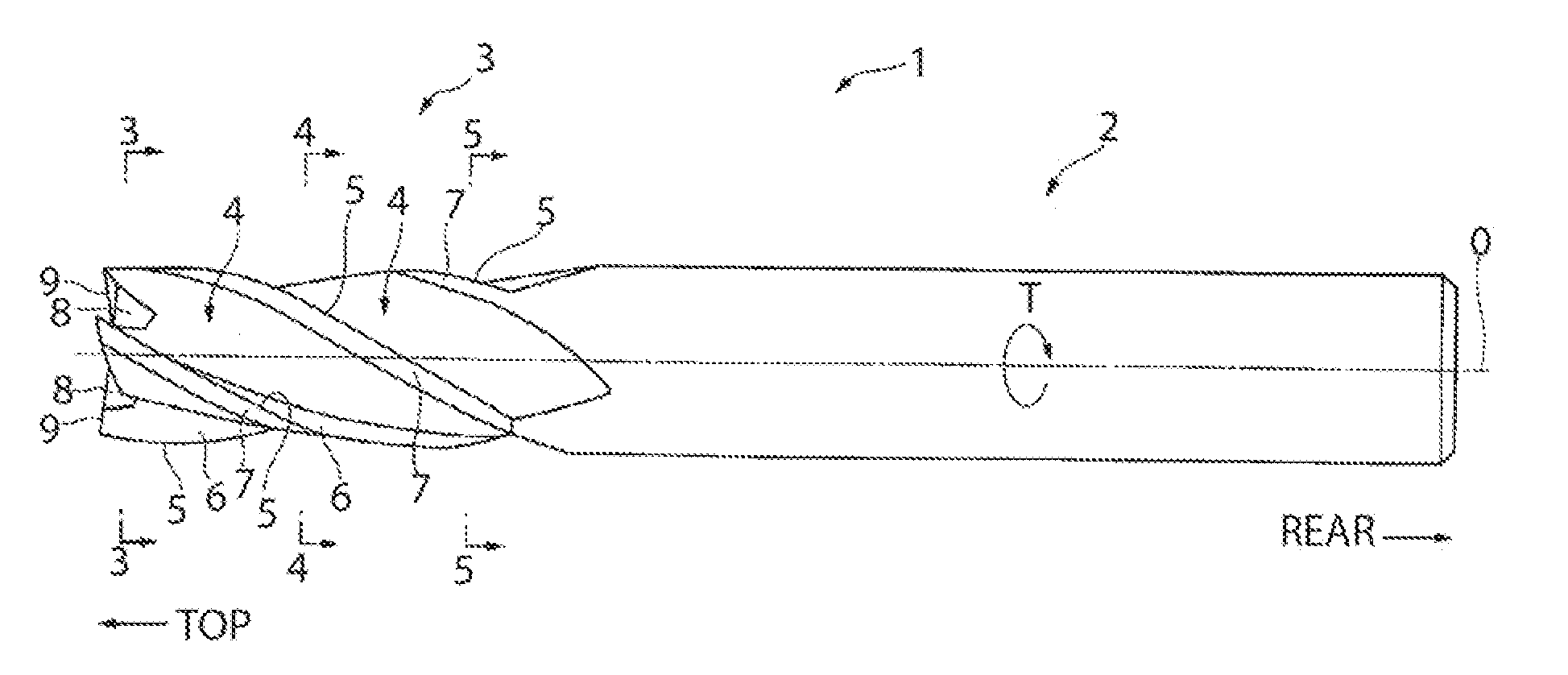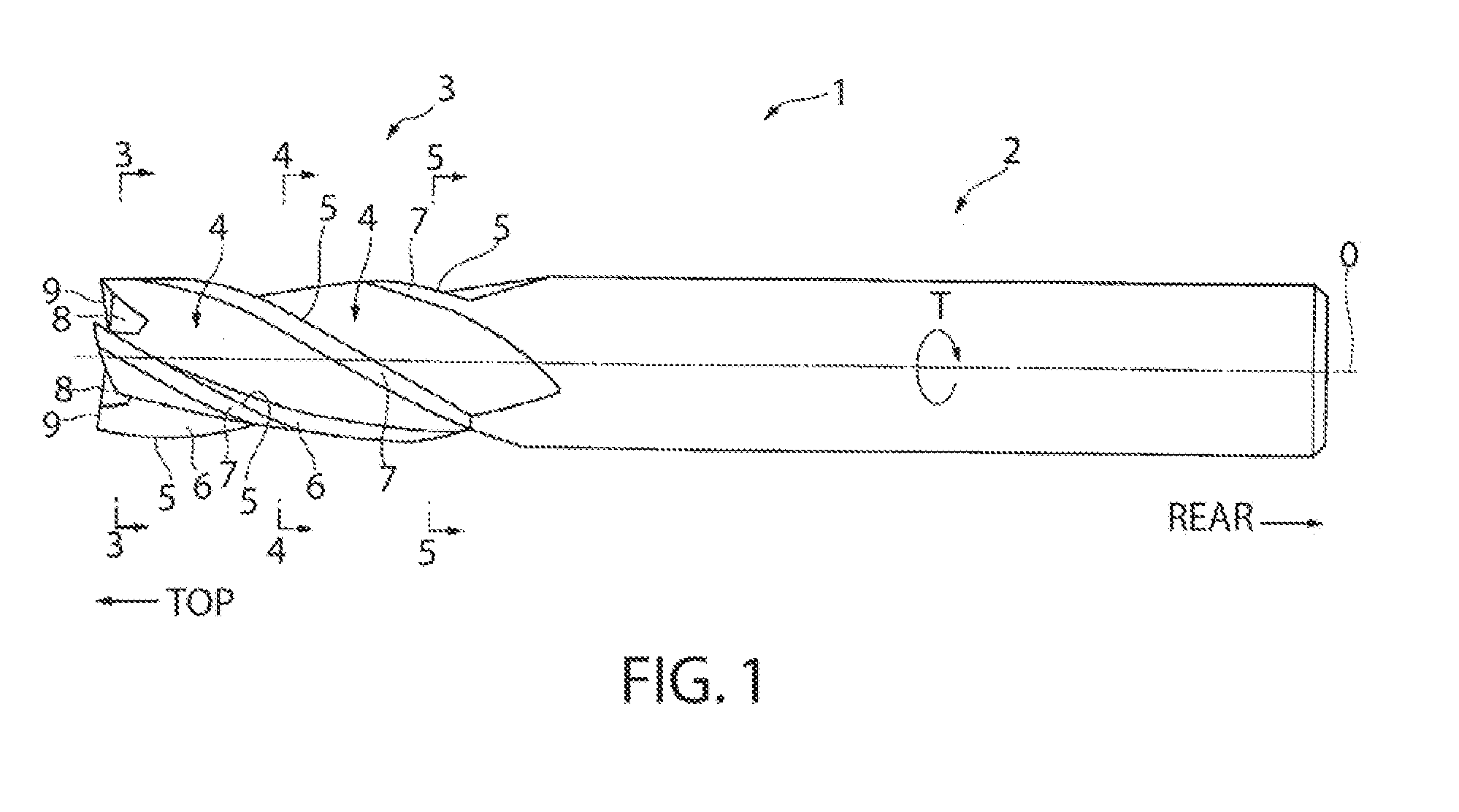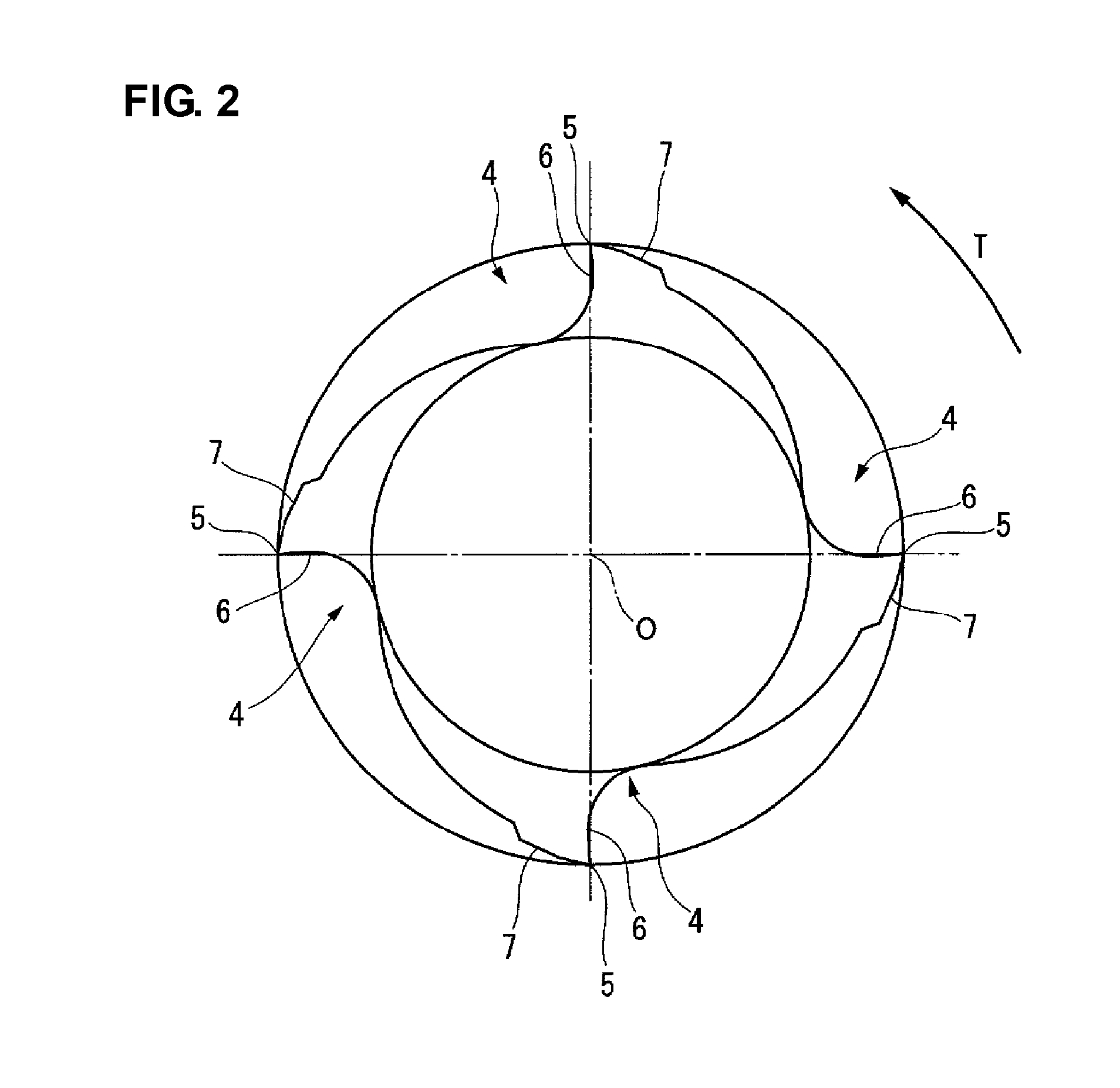End mill
a technology of end mills and end plates, which is applied in the direction of metal-working equipment, milling equipment, metal-working apparatus, etc., can solve the problems of reducing cutting edge sharpness, affecting cutting performance, and affecting cutting edge sharpness, so as to improve fracture resistance and reduce the effect of bending and bending resistance and large cutting resistan
- Summary
- Abstract
- Description
- Claims
- Application Information
AI Technical Summary
Benefits of technology
Problems solved by technology
Method used
Image
Examples
Embodiment Construction
[0022]In a preferred embodiment of the present invention, an end mill has an end mill body 1, which is in a cylindrical shape substantially and rotates on an axis O.
[0023]A rear end (rightmost in FIG. 1) of the end mill body 1 comprisesa shank portion 2 by which a spindle end of a machine tool, etc. can grip the end mill body 1.
[0024]A top portion (leftmost in FIG. 1) of the end mill body 1 comprisesa cutting edge potion 3.
[0025]In a periphery of the cutting edge portion 3, multiple (four as illustrated in the present embodiment) flutes 4 in a helical shape around the axis O with a constant helix angle, which is an angle rearward in the end mill rotating direction T, are formed from the top side of the end mill body 1 toward the rear end side at intervals of a radial constant. Intersecting ridge portions are formed between twall surfaces of the flutes 4 facing to the front side in the end mill rotating direction T and peripheral surfaces connected continuously with rears of the wall...
PUM
 Login to View More
Login to View More Abstract
Description
Claims
Application Information
 Login to View More
Login to View More - R&D
- Intellectual Property
- Life Sciences
- Materials
- Tech Scout
- Unparalleled Data Quality
- Higher Quality Content
- 60% Fewer Hallucinations
Browse by: Latest US Patents, China's latest patents, Technical Efficacy Thesaurus, Application Domain, Technology Topic, Popular Technical Reports.
© 2025 PatSnap. All rights reserved.Legal|Privacy policy|Modern Slavery Act Transparency Statement|Sitemap|About US| Contact US: help@patsnap.com



